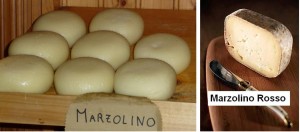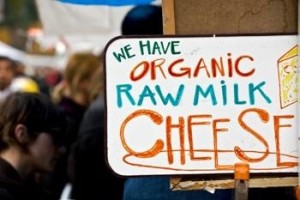Fresh cheeses are a main garnish of Mexican food. Consumption of artisanal fresh cheeses is very common and most of them are made from unpasteurised cow milk.
 A total of 52 fresh unpasteurised cheeses of five different types were purchased from a variety of suppliers from Tabasco, Mexico. Using the most probable number method, 67% and 63% of samples were positive for faecal coliforms and E. coli, respectively; revealing their low microbiological quality.
A total of 52 fresh unpasteurised cheeses of five different types were purchased from a variety of suppliers from Tabasco, Mexico. Using the most probable number method, 67% and 63% of samples were positive for faecal coliforms and E. coli, respectively; revealing their low microbiological quality.
General hygienic conditions and practices of traditional cheese manufacturers were poor; most establishments had unclean cement floors, all lacked windows and doors screens, and none of the food-handlers wore aprons, surgical masks or bouffant caps. After analysing all E. coli isolates (121 strains) for the presence of 26 virulence genes, results showed that 9 (17%) samples were contaminated with diarrheagenic E. coli strains, 8 harboured non-O157 Shiga toxin producing E. coli (STEC), and one sample contained both STEC and diffusely ad-herent E. coli strains. All STEC strains carried the stx1 gene. Potential uropathogenic E. coli (UPEC) strains were isolated from 15 (29%) samples; the most frequent gene combination was fimA-agn43. Two samples were contaminated with Salmonella. The results demonstrated that unpasteurised fresh cheeses produced in Tabasco are of poor microbiological quality and may frequently harbour foodborne pathogens.
Food safety authorities in Mexico need to conduct more rigorous surveillance of fresh cheeses. Furthermore, simple and inexpensive measures as establishing programs emphasizing good hand milking practices and hygienic manufacturing procedures may have a major effect on improving the microbiological quality of these food items.
Mexican unpasteurised fresh cheeses are contaminated with Salmonella spp., non-O157 Shiga toxin producing Escherichia coli and potential uropathogenic E. coli strains: A public health risk
International Journal of Food Microbiology 237 (2016) 10–16, DOI: http://dx.doi.org/10.1016/j.ijfoodmicro.2016.08.018
R Guzman-Hernandez, A Contreras-Rodriguez, R Hernandez-Velez, I Perez-Martinez, A Lopez-Merino, MB Zaidi, T Estrada-Garcia











